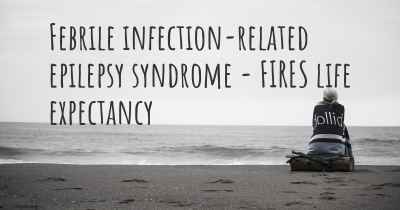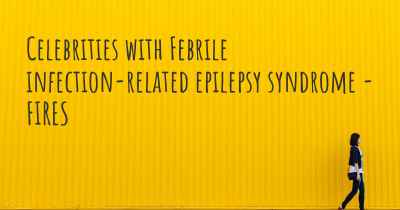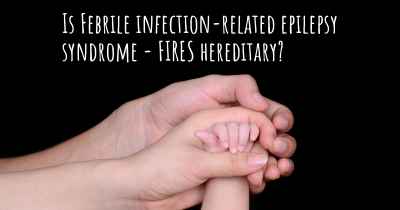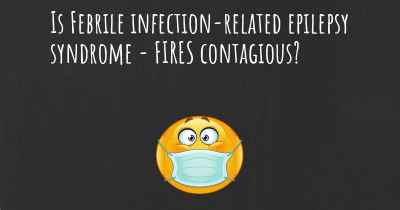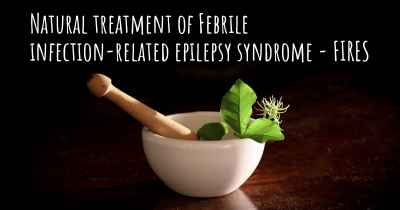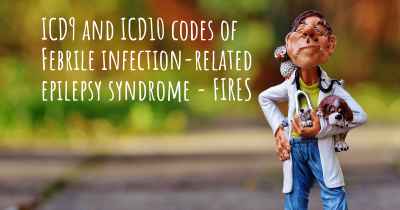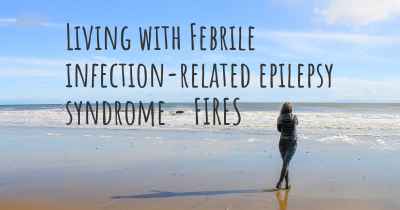What are the best treatments for Febrile infection-related epilepsy syndrome - FIRES?
See the best treatments for Febrile infection-related epilepsy syndrome - FIRES here
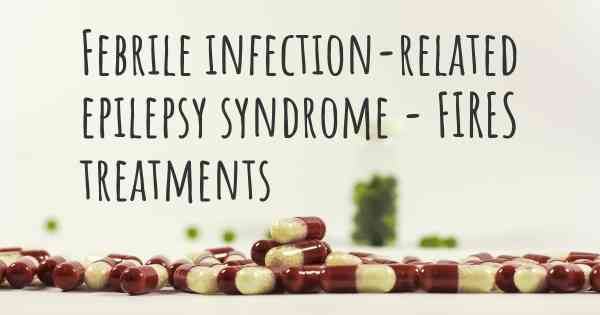
Treatments for Febrile Infection-Related Epilepsy Syndrome (FIRES)
Febrile Infection-Related Epilepsy Syndrome (FIRES) is a rare and severe form of epilepsy that typically affects previously healthy children and young adults. It is characterized by prolonged seizures that are resistant to standard antiepileptic medications and often follows a febrile illness. The exact cause of FIRES is unknown, and treatment can be challenging. However, there are several approaches that have shown promise in managing this condition.
1. Aggressive seizure control
Controlling seizures is the primary goal in managing FIRES. Since seizures in FIRES are often refractory to conventional antiepileptic drugs, a combination of multiple medications may be necessary. High-dose benzodiazepines, such as midazolam or lorazepam, are commonly used as first-line treatments to stop ongoing seizures. Other medications, such as barbiturates (e.g., phenobarbital) or anesthetics (e.g., propofol), may be required for prolonged seizure control in an intensive care setting.
2. Immunotherapy
Immunotherapy has shown promise in the treatment of FIRES. This approach aims to modulate the immune system and reduce the inflammation that may contribute to the development of seizures. Intravenous immunoglobulin (IVIG), corticosteroids (e.g., methylprednisolone), and plasma exchange are commonly used immunotherapies in FIRES. These treatments may help to suppress the immune response and potentially improve seizure control.
3. Ketogenic diet
The ketogenic diet is a high-fat, low-carbohydrate, and adequate-protein diet that has been used for decades to manage epilepsy. It has shown efficacy in various forms of drug-resistant epilepsy, including FIRES. The ketogenic diet works by inducing a state of ketosis, where the body utilizes ketones as an alternative energy source. This metabolic shift may help reduce seizure frequency and severity in some individuals with FIRES.
4. Neurostimulation
Neurostimulation therapies involve the use of devices that deliver electrical impulses to specific areas of the brain to modulate abnormal brain activity. Vagus nerve stimulation (VNS) and responsive neurostimulation (RNS) are two types of neurostimulation that have been explored in the treatment of FIRES. These approaches aim to interrupt seizure activity and provide long-term seizure control.
5. Supportive care
Supportive care is crucial in managing FIRES, as it is a complex and debilitating condition. This includes close monitoring in an intensive care unit, ensuring proper hydration and nutrition, and managing potential complications such as respiratory distress or infections. Physical, occupational, and speech therapies may also be beneficial in addressing any functional deficits resulting from the seizures.
6. Investigational treatments
Given the limited understanding of FIRES, there are ongoing efforts to explore investigational treatments. These may include novel antiepileptic drugs, immune-modulating therapies, or other targeted interventions. Participation in clinical trials can provide access to these experimental treatments and contribute to advancing our knowledge of FIRES.
It is important to note that the effectiveness of treatments for FIRES can vary among individuals, and there is no one-size-fits-all approach. The management of FIRES requires a multidisciplinary team, including neurologists, epileptologists, intensivists, and other specialists, to tailor the treatment plan to each patient's specific needs.
Posted Sep 19, 2017 by Ramses Ricardo 2000
Posted Jun 20, 2022 by Carla 4020
